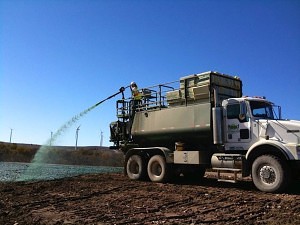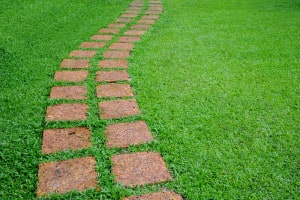 Timing is everything when it comes to hydroseeded lawns, and that idea applies when you first seed the lawn, when it’s time to mow, and when it’s time to fertilize the lawn. Another issue you may need to deal with is the arrival of weeds like dandelions, clover, and crabgrass.
Timing is everything when it comes to hydroseeded lawns, and that idea applies when you first seed the lawn, when it’s time to mow, and when it’s time to fertilize the lawn. Another issue you may need to deal with is the arrival of weeds like dandelions, clover, and crabgrass.
Did you know that a single dandelion may create up to 15,000 seeds and can survive in the soil to rise again each year even when it’s cut down? Avoiding weeds can feel like a full-time job, but here are some options for taking care of your lawn’s weed problems.
Reduce Weeds by Hydroseeding in the Summer
Most landscaping and yard professionals will suggest planting in the spring or summerl for the best results. To reduce the likelihood of weeds invading the lawn, some professionals recommend getting the lawn hydroseeded to reduce the likelihood of weeds showing up after the initial application.
There are also options regarding the application of hydroseeding that can limit how many weeds appear in the lawn once the grass starts growing. For example, you’ll get fewer weeds in the lawn if you add new topsoil to the area before the hydroseeding. Also, if you really don’t want to take care of weeds, your hydroseed company can recommend the best grass for low weed growth.
Reed Hydromulch is your ally when it comes to planning a new hydroseeded lawn that doesn’t grow weeds.
Work with a Professional Landscaper
Just as it’s a good idea to have a professional perform your hydroseeding in Dallas, the same is true for taking care of the lawn in the long run. While you might have a particular affinity for mowing the lawn and taking care of your home’s exterior, many homeowners only take care of their lawn every few months when the mood strikes, which can lead to weed growth and an overgrown lawn.
Arranging for service from a professional landscaper after your hydro-seed lawn is installed is a great way to make sure the necessary maintenance and care occurs on the right schedule for your lawn. Too often, a lawn looks incredible soon after the hydroseeding is completed, but caring for the lawn becomes an afterthought and a task to be done “later.” Putting off regular lawn maintenance may mean extra weeds.
Get a professional’s help during and after the hydroseeding process! Your lawn will thank you!
Getting Rid of the Weeds Yourself
If you’re a particularly avid gardener, or you take pride in caring for your lawn, there’s no reason you can’t solve your weed problems with some standard herbicides. Major manufacturers and their weed removal products like can help you take care of weeds like clover, chickweed, and oxalis. Crabgrass is usually pretty tough to fight, but your local home and garden center may have a specialty herbicide you can use.
Natural options for fighting weeds include using corn gluten meal, which is supposed to stop the seeds of the weeds from growing into new weeds. Another interesting option is using one ounce of vodka mixed with two cups of water and some dish soap. You can apply this solution directly to each weed, and it should dry the weeds out.
When applying herbicides and weed killers to your lawn, resist the urge to dampen the entire lawn because you don’t want to kill the grass, too.
A Healthy Lawn Resists Weed Growth
A lawn that’s splotchy and patchy with grass and weeds is not the easiest surface to deal with when you’re trying to grow grass and get rid of weeds. The best way to tackle weeds after you’ve fought them once is to make sure that your grass is healthy and thick. Weeds can’t take root and thrive if there’s no room for them.
If you’re interested in a lush, thick lawn for your Dallas home, get in touch with Reed Hydromulch, Inc. We’ll put you on the right path to a beautiful lawn that’s thick, green, and weed-free.
Dallas / Ft Worth and DFW area
